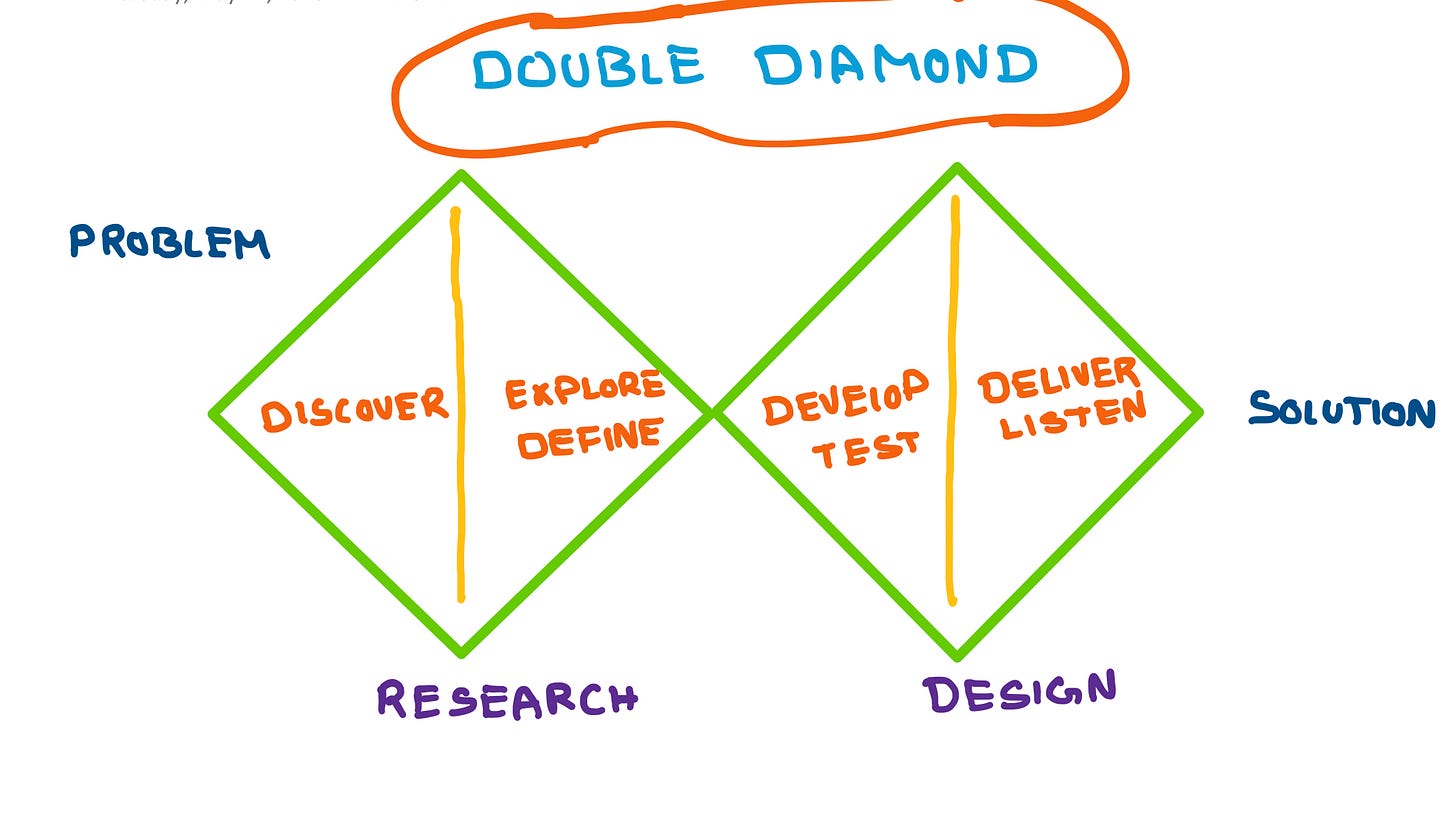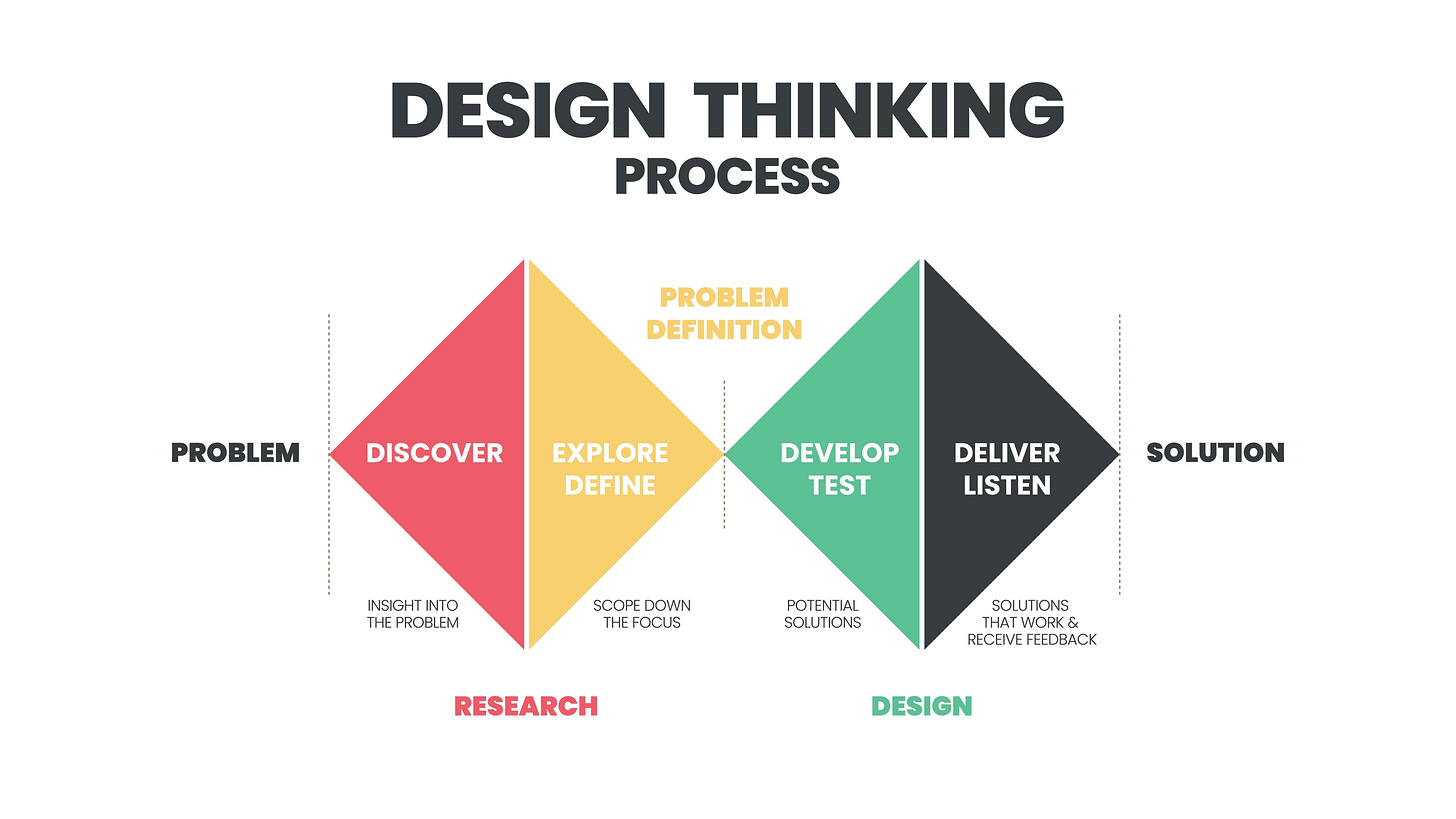Week 39 - 🔷🔶 Double Diamond Framework: A Comprehensive Guide for Product Managers in Addressing Complex Problems 🔶🔷
Quote
"The Double Diamond framework enables product managers to navigate the complexities of problem-solving by breaking down challenges into manageable components, fostering innovation, and ultimately delivering customer-centric solutions.”
Poll
💯 Framework // Concept // Mental Model
Introduction
As a product manager, you are constantly faced with the challenge of addressing complex problems and developing solutions that cater to customer needs. To excel in your role, you need a robust framework that guides effective decision-making and fosters innovative ideas. The Double Diamond framework, developed by the Design Council, is a renowned problem-solving methodology that does just that. In this comprehensive guide, we will provide an in-depth overview of the Double Diamond framework and its four stages: Discover, Define, Develop, and Deliver. Additionally, we will demonstrate its application in real-life scenarios, discuss best practices for each stage, and showcase the impact of the Jobs to be Done framework.




